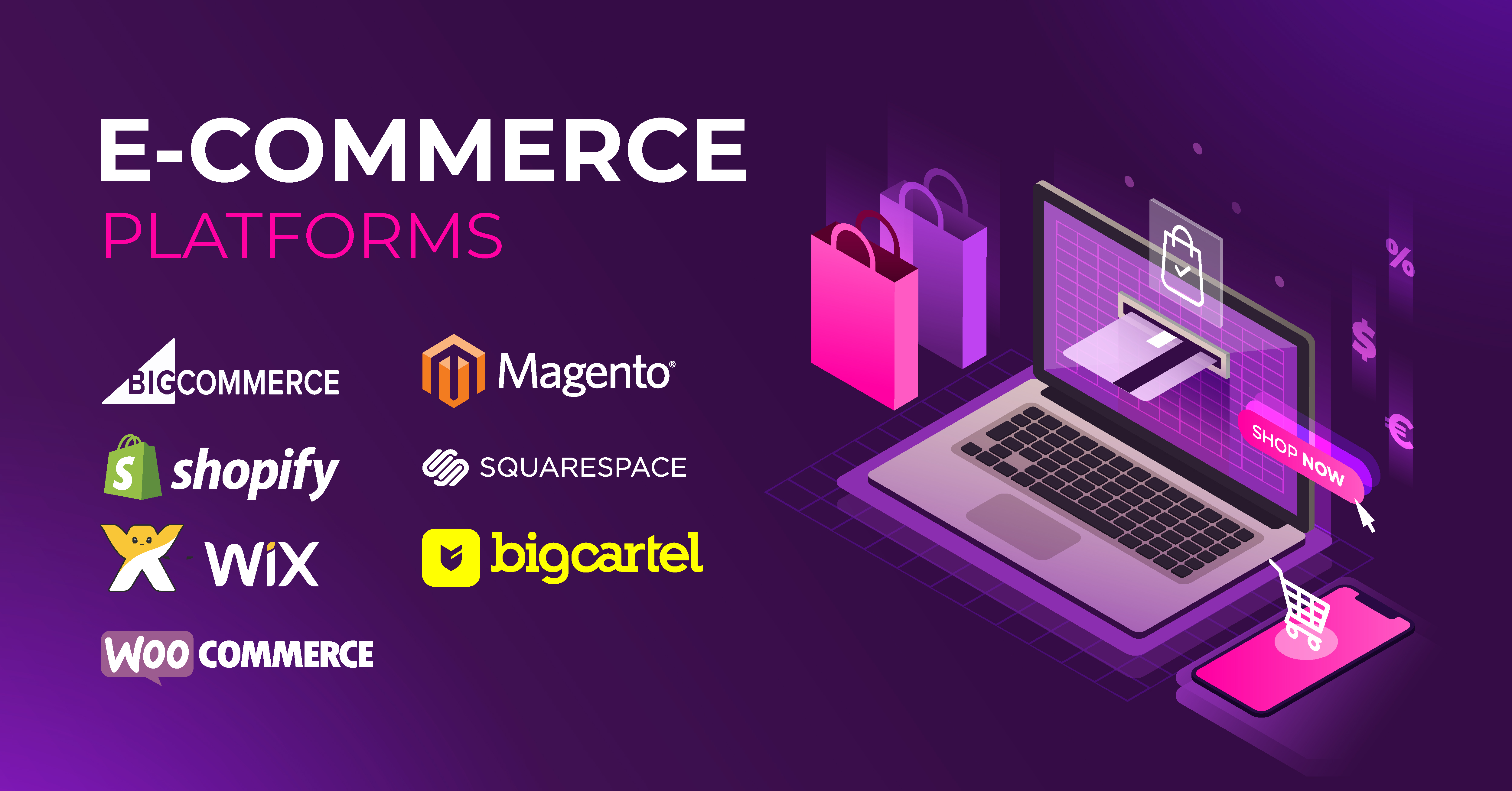E-COMMERCE FRAMEWORK: OVERVIEW AND COMPARISON

Data Analyst
Experienced data analyst working with data visualization, cloud computing and ETL solutions.
June 17, 2020
AN OVERVIEW ON E-COMMERCE FRAMEWORK
E-commerce framework is associated with software frameworks to ease out e-commerce activities and applications. E-commerce framework provides an appropriate atmosphere to develop e-commerce platforms and activities quickly and effectively. These platforms or frameworks are amendable and customizable thus could fit any requirements of the clients. E-commerce frameworks are compatible to build and develop online shops and other activities related to e-commerce virtually. As the term suggests, the e-commerce framework provides a base structure for activities associated with e-commerce. It also aids in the progress of the general programs and could be extended and amended according to the requirements of the customers. With the advancement of internet networks economical markets that are based on the online systems have gained popularity. E-commerce and e-business are two sides of the internet economy.
The following are the steps that are associated with the functioning of the internet economy.
1. Internet network
The Internet is the fastest mode of communication in the present generation. This is the base factor of online markets and is facilitated by internet service providers.
2. Developing and designing
The next factor that mends the system of online markets is designing and developing platform. This is the face of the online market to the audience. The security and type of e-commerce websites must be ensured while conducting this step.
3. The link between buyers and sellers
Through various online platforms, the link between online market sellers and buyers could be established. It is necessary to spread the brand to the target audience as it will impact the sale of the goods and services.
4. Selling and payment process
Goods and services are sold and payments are conducted in this step. The authenticity of the online transaction intermediate sites and the security must be ensured before processing an order.
USES OF AN E-COMMERCE FRAMEWORK
Despite the type of business that you plan to start, and efficient e-commerce platform is necessary to determine the progress and growth of your business. E-commerce platform provides the clients with the overall picture of the online business. This framework aids in the effective management of all the elements and functions of the online business. E-commerce platform enables us to customize product information, merchandise, pricing, promote and manage products and sales. It is also beneficial for scaling and securing information data.
FACTORS OF E-COMMERCE PLATFORM
E-commerce platforms ease out the transactions between sellers and buyers of online business. It provides an overall structure and unifies the functions and processes of business and transactions. This platform is necessary to provide a clear image of the online businesses to the target audience and it is also important to determine the likes and dislikes of the customers. Therefore to ensure these factors, an e-commerce platform must be:
A unique and single platform
E-commerce platforms must aid multiple services that are associated with the business. It should unify accounting, sales, management, marketing, branding, payments, and customer services on a single platform.
A comprehensive view of customers
E-commerce platforms could be customized according to the likes and requirements of customers. Analyzing these expectations of customers will enhance the growth and progress of online businesses and transactions.
Effective management of orders
From online displaying and advertising of products and services to the payment and delivery of the orders must be managed efficiently and without any flaws. The shipping, returning, and refund of the orders also must be managed well through the e-commerce platforms.
Provide unique experiences for customers
E-commerce platforms that provide unique and personalized services to the customers will increase the intensity and outreach of the brand and products.
Expand the reach
By providing channels for conducting multiple services in numerous countries, the availability of the numerous languages and payment methods via multiple currencies on the same platform will enhance the widespread reach of the brand.
CLASSIFICATIONS OF E-COMMERCE PLATFORMS

Open source, software as a service (SaaS), and headless commerce are three ways to classify e-commerce platforms.
Open-source e-commerce platform
Both on cloud and on-premise could be taken in as a hosting environment for open source e-commerce platforms. In this e-commerce platform, one could alter and modify all elements of the code. Open-source e-commerce platforms gained popularity in the initial years of the last decade. It is still popular with the development and growth of organizations that desire for a cohesive and complete control of their e-commerce sector. Customers are accountable for PCI compliance and hosting while using an open-source e-commerce platform. They must also take responsibility for the security issues and the developing marketing and promotion tools for the site. This type of e-commerce platform may not be convenient for all brands as it is expensive to sustain the quality, requires wide technical knowledge, and are very bulky in nature.
SaaS (software as a service) e-commerce platform
The hosting environment that supports SaaS is Cloud. SaaS e-commerce platform provides an auto-running online business platform and eliminates the complexity of manual management of software. In this type of e-commerce platform the customers 'rent' or adopt a platform instead of developing an open-source solution. The expense of managing the SaaS e-commerce platform is cheaper compared to open source platforms. Updates, security management, hosting, PCI compliance, and other elements that require efficient management are conducted by the SaaS platform providers. SaaS is an easily accessible and affordable e-commerce platform. The major concern associated with SaaS e-commerce platforms is the lack of adaptability and customization. Most of the e-commerce brands are based on SaaS e-commerce platforms.
Headless e-commerce platforms
Cloud is the hosting environment of headless e-commerce platforms. The headless commerce acts as a separation between the front and back ends of e-commerce platforms. This system enables the independent functioning of both ends and thus does not require balancing between them. Within this platform, two applications communicate using APIs. This platform also decreases the IT dependency of the projects. This e-commerce platform is easily accessible, affordable, and provides quick solutions.
COMPARISON OF POPULAR E-COMMERCE PLATFORMS
E-commerce platforms have advantages and disadvantages. Before choosing the platform for e-commerce it is necessary to understand these features.
BigCommerce
BigCommerce provides an open SaaS platform and is an upcoming headless commerce provider with low cost and flexible API. BigCommerce is a refined and flexible SaaS e-commerce platform. This platform provides space for small businesses and start-ups. The complexity of the in-built elements of BigCommerce is high; therefore it is often difficult to learn the features of this platform. It is best for a fast-growing business.
Magneto
Initially, Magento was on-premise and open source e-commerce platforms that were picked by companies that invested huge amounts in IT and development. Lately, they launched a cloud-based open-source platform to ease out the processes. The major advantage of Magento is that users have complete control of the platform as it is an open-source platform. This turns out to be the disadvantage as the updates and integrations of the site requires manual action. This platform also does not support content creation options.
Shopify
Shopify is a public provider of SaaS e-commerce platform. They have gained popularity within the amateur businessmen and hobbyists. This platform provides a space for learning for those who are new to the field of online business and also provide professional business themes. It is an all-round best e-commerce platform with multiple channel integration. Major drawbacks of Shopify include missing of in-built e-commerce features, high transaction fees, and restricted API call volume.
Squarespace
It is a SaaS e-commerce platform provider. Squarespace e-commerce platforms are famous for their flexible and creative designs. Squarespace provides the best quality site features but is complex to navigate freely. Squarespace has a very limited shipping facility and payment gateways.
Wix
Wix is similar to Squarespace with its easy website design templates. Wix has gained popularity among small business entrepreneurs with its simple and easy to handle platforms, free themes, and accurate pricing. It is compatible with both amateurs and expert level business people. They lack the advanced potentiality of e-commerce. Wix is a beginner-friendly e-commerce platform with fewer sales tools.
BigCartel
This e-commerce platform is designed mainly to support small scale merchants who do not require a refined framework. Main users of BigCartel e-commerce platforms are budding artists and craftsmen. The main concept of BigCartel is minimal themes, but they do not support complex website features.
WooCommerce
WooCommerce is an open-source platform. This platform is also used by beginner artists and bloggers. This e-commerce platform is associated with WordPress blogging site. It is highly flexible and customizable. It is free and compatible as it is an open-source platform. But the extensions in this platform could be expensive.
There are plenty of options for e-commerce platforms that are compatible and customizable according to the requirements of the users. Each e-commerce platform has its benefits and drawbacks. Therefore it is necessary to understand the nature of your business and features of e-commerce platforms before choosing an approprite e-commerce framework for your business. It is also necessary to understand the customer volume capacity of e-commerce platforms.













